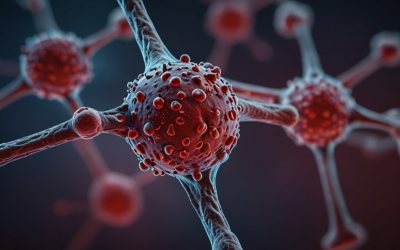As you navigate the complex battlefield of viral infections, antiviral interventions stand as your arsenal, equipped to tackle the unseen enemy. You’re aware that viruses constantly evolve, slipping through the cracks of our defenses, and it’s your understanding of these interventions that can turn the tide. From the precision of targeted therapies that disrupt viral entry and replication to the broad-spectrum approach of vaccines that armor the immune system, you’re at the forefront of a dynamic field. You recognize the power of monoclonal antibodies that act as guided missiles against specific viral antigens and the promise of novel technologies that could redefine our approach to viral control. Yet, as you stand armed with knowledge, you must also acknowledge the challenges that lie ahead: drug resistance, accessibility, and the looming threat of new viral pathogens. With the stakes so high, it’s imperative to stay abreast of the latest developments, understanding that each piece of information could be the key to turning viral foes into a tale of human triumph.
Key Takeaways
- Antiviral drugs target viral replication mechanisms and can block receptors or disrupt viral entry and replication.
- Vaccines are important in priming the immune system against specific viral threats and should trigger both innate and adaptive immune responses.
- Monoclonal antibodies can be effective in preventing viral invasion and have shown promise in controlling various viral infections.
- Antiviral resistance and the high mutation rates of viruses pose challenges, necessitating the development of new antiviral drugs and the use of combination therapies.
Understanding Antivirals
Antivirals target the mechanisms of viral replication, offering a critical defense in managing infections by impeding a virus’s ability to hijack your cells. These antiviral drugs are meticulously designed to block receptors or disrupt the processes viruses exploit to enter and replicate within host cells. As you delve into the realm of antiviral therapy, you’ll find a diverse arsenal of approved antiviral agents, each tailored to combat specific pathogens, including coronaviruses like COVID-19, Ebola, influenza, genital herpes, and hepatitis B and C, as well as HIV.
Active drug discovery programs are constantly pursuing the development of new antiviral compounds. This pursuit involves identifying novel targets for antiviral intervention, which range from viral entry and uncoating to nucleic acid synthesis and protein processing. By understanding the unique lifecycle of each virus, researchers can pinpoint critical stages where intervention can be most effective. This specificity is paramount, as different viruses require distinct antiviral strategies.
Moreover, the adaptability of viruses necessitates ongoing vigilance in the face of resistance mutations. These genetic changes can render a once-effective antiviral drug obsolete. Consequently, the drug development process must anticipate and address potential resistance, ensuring a stable of therapeutics that can outpace the evolutionary tactics of viral adversaries.
To serve the greater good, it’s essential to recognize the importance of these medications not only in treating individual patients but also in curbing the spread of infections. Antivirals can reduce viral load, ease symptoms, and shorten the duration of illness, thereby diminishing the risk of transmission to others and contributing to public health efforts.
Vaccination Strategies

Vaccination strategies, employing a variety of vaccine types such as live-attenuated, inactivated, and mRNA-based, are designed to prime your immune system against specific viral threats, offering a proactive approach to disease prevention. Each vaccine type has a distinct mechanism of action that facilitates an effective host immune response, tailored to combat the target pathogen. As health-care providers, you’re instrumental in implementing these strategies to improve patient outcomes.
Consider the following key components of successful vaccination strategies:
- Selection of Antigen Targets: You must identify the most effective viral antigens that will elicit strong Neutralizing antibodies. These are critical in preventing the attachment and entry of viruses into host cells, thereby reducing the viral load and improving the quality of life for individuals at risk of exposure, such as preventing HIV exposure.
- Optimization of Vaccine Formulations: It’s essential to formulate vaccines that can trigger both the innate immune response and the adaptive immunity. The balance between these responses ensures immediate protection as well as long-lasting immunity, reducing the need for frequent vaccinations.
- Integration with Antiviral Agents: In some cases, vaccination strategies are most effective when combined with antiviral agents, especially in immunocompromised individuals. This synergistic approach can enhance the immune system’s capacity to control viral replication and dissemination.
Your expertise in these vaccination strategies empowers you to safeguard public health. By understanding the science behind vaccines and the nuances of the immune response, you’re well-equipped to guide individuals in making informed decisions about their health care. The deployment of these strategies is central to curbing the spread of infectious diseases and ensuring a resilient community.
Antiviral Drug Mechanisms
Building on the foundation of preemptive immunization, we now turn our focus to the specific mechanisms of antiviral drugs that offer a line of defense against viral replication once an infection has occurred. These drugs, integral to effective drug therapy, function as inhibitors of viral processes by targeting key viral proteins.
Direct-acting antivirals that target specific stages of viral replication are pivotal in this fight. For instance, Enfuvirtide disrupts the HIV-1 lifecycle by binding to the gp41 viral protein, forestalling the virus’s entry into host cells. This blockage is crucial in halting the spread of infection within the body.
Ribavirin, a nucleoside analogue, embodies a dual method of action. It not only increases the viral mutational rate, precipitating deleterious mutations, but also diminishes the production of infectious particles, thereby blunting the virulence of the virus. This analogue slyly incorporates itself into viral RNA, resulting in lethal hypermutation.
RNA interference (RNAi) represents a novel therapeutic approach that silences specific genes. By targeting viral RNA, RNAi can prevent the translation of critical viral proteins, effectively neutralizing the virus’s ability to propagate.
Maraviroc, another potent agent, blocks the CCR5 coreceptor, essential for HIV entry into cells. Without access, the virus cannot initiate infection, rendering it impotent. Similarly, Cyclosporin A (CsA) inactivates cyclophilin A, a protein indispensable for HCV replication, effectively crippling the virus.
Each of these drugs exploits unique mechanisms of action to disrupt viral replication. They act on viral polymerases, reverse transcriptase, or other components critical to the viral lifecycle, showcasing the ingenuity of antiviral therapy in managing infectious disease.
Monoclonal Antibody Treatments

Harnessing the specificity of monoclonal antibody treatments, scientists have developed therapies that latch onto viral proteins and thwart their ability to invade human cells. These antiviral drugs, tailored for precision, have become a cornerstone in the fight against viral infections. By attaching to a virus’s surface antigens, these monoclonal antibodies block the pathogen’s entry into cells, effectively neutralizing its potential for harm.
In this advanced era of antiviral therapeutic interventions, monoclonal antibody treatments stand out due to their targeted approach. Here are three critical aspects of these treatments:
- Bespoke Targeting: Drugs developed harness the body’s immune response by imitating natural antibodies. Each monoclonal antibody is designed to recognize specific epitopes on a virus, which allows for the treatment of particular viral infections, such as HIV or HCV.
- Clinical Trial Success: Various monoclonal antibody treatments have undergone rigorous clinical trials, offering hope in treating diseases that previously had limited therapeutic options. These trials have paved the way for therapies that can significantly reduce viral loads in patients.
- Prophylactic and Therapeutic Use: These antibodies can be used both to prevent and treat viral infections. For those at high risk of exposure to pathogens like the human immunodeficiency virus (HIV) or hepatitis C virus (HCV), prophylactic use may provide a shield against infection.
As you endeavor to serve those afflicted by viral diseases, it’s essential to understand that monoclonal antibody treatments are not a one-size-fits-all solution. Each therapy is the result of extensive research and development, aiming to match the intricate nature of different viruses with a potent countermeasure. The scientific community continues to refine these treatments, enhancing their efficacy and accessibility to patients globally.
Resistance and Challenges
Despite the promise of monoclonal antibody treatments, the development of antiviral resistance remains a significant hurdle, necessitating continual innovation in drug design and application. You’re aware that drug resistance arises when mutations in the viral genome diminish the effectiveness of existing antiviral medications. This challenge is particularly acute given viral diversity and high mutation rates, complicating the creation of antivirals that are effective against all virus strains.
You understand that the relentless emergence of resistant viruses requires the persistent development of new antiviral drugs. In this pursuit, you aim to target conserved viral structures to devise broad-spectrum antivirals while being mindful of potential side effects on host cells. Your goal is to minimize these off-target effects, ensuring the safety and efficacy of the therapy administered.
Combination therapies have become an essential strategy in your arsenal, especially for the treatment of hepatitis C and HIV treatment. These therapies target multiple steps in the viral life cycle, which is crucial in combating resistance and enhancing the overall antiviral effect. You recognize that in chronic infection scenarios, the judicious use of combination therapies can prevent the onset of resistance, thereby improving patient outcomes.
As you continue to confront these challenges, your focus is not only on the development of antiviral agents but also on the precise application of these therapies. You’re committed to ensuring that patients receive the most effective, personalized care possible, while also contributing to the global effort to manage and control viral diseases.
Novel Therapeutic Approaches

As you navigate the complexities of antiviral resistance, exploring novel therapeutic approaches offers a pathway to potent and versatile treatments. The scientific community is advancing drug discovery programs for filoviruses and other viral agents by focusing on the interruption of viral pathogenesis at multiple stages.
Here are three promising areas of research and development in antiviral therapeutics:
- Small Molecule Inhibitors: These compounds, like enfuvirtide, specifically target viral proteins. Enfuvirtide binds to the gp41 protein of HIV-1, thwarting the virus’s attempt to fuse with host cells. Small molecules are key in the design of targeted antivirals due to their ability to interfere with specific stages of the viral life cycle.
- Host-Directed Therapies: Therapeutic approaches such as the use of RNA interference (RNAi) involve silencing genes within the host cell that are crucial for viral replication. Additionally, strategies targeting host factors like MicroRNA-122 offer a means to combat HCV infection by disrupting the virus’s exploitation of host cellular machinery.
- Entry and Fusion Inhibitors: Compounds like maraviroc block viral entry by targeting host cell receptors. Maraviroc is effective in HIV treatment as it prevents the virus from binding to the CCR5 coreceptor, a critical step for entry into immune cells.
Phase II clinical trials are crucial stages in the development of these novel antivirals. They not only determine efficacy and safety but also contribute to the unrestricted research re-use of data, propelling the field toward more effective therapeutic solutions. These approaches, when incorporated into comprehensive antiviral strategies, are invaluable in your mission to serve patients facing viral diseases.
Public Health Implications
Understanding the public health implications of antiviral interventions is essential, as these therapies can significantly reduce the prevalence and impact of chronic viral infections on a global scale. Antiviral treatment, particularly for life-threatening diseases such as hepatitis B virus (HBV) and human immunodeficiency virus (HIV) infection, has transformed the management of these conditions and contributed to a dramatic improvement in health outcomes.
You’ll find that approved drugs by the Food and Drug Administration (FDA) have been pivotal in addressing serious viral infections. These include a range of oral antiviral agents that serve as a lifesaving therapy for millions of individuals. For HIV, antiretroviral therapy has not only prolonged life expectancy but also decreased the risk of virus transmission, highlighting the dual benefit of individual and public health.
The table below illustrates the impact of antiviral interventions on two key viral infections:
| Viral Infection | Impact of Antiviral Interventions |
|---|---|
| Hepatitis B (HBV) | Reduction in liver-related complications and hepatocellular cancer |
| HIV Infection | Improved quality of life and reduced transmission rates |
Combination therapies, including antibodies and small molecule inhibitors, have revolutionized the approach towards viral control. They offer a more robust defense against viral replication and resistance, which is crucial in the fight against evolving pathogens.
As a healthcare professional dedicated to serving others, it’s vital to understand the broad public health implications of these interventions. Not only do they alleviate the burden on healthcare systems by preventing serious complications and hospitalizations, but they also contribute to the greater goal of viral eradication and control. It’s your role to advocate for and participate in strategies that maximize the impact of these therapies on public health.











